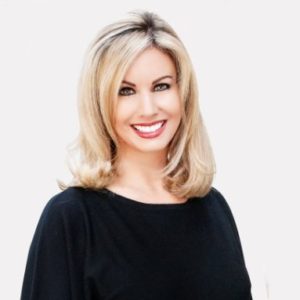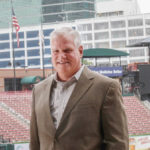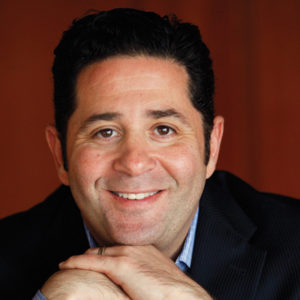 Last Saturday I had the pleasure of witnessing Duke’s first bowl victory in 54 years. By all measures it was a momentous occasion as two basketball powerhouses battled it out on a gridiron carved out of the baseball diamond that is Yankee Stadium! Indiana University, whose founding dates back to 1820, has a long track record of success both on and off the field and its fans, turned out in red & white droves to cheer on their Hoosiers. Duke University, which traces its roots back to 1838 though it didn’t actually get its current brand name until 1924, also attracted several thousand delirious Blue Devils who were thrilled to learn about an obscure rule in college football — field goal attempts that rise above the goal posts can’t be reviewed after being called fair or foul. It was upon this rule that Duke’s victory was sealed and history rewritten.
Last Saturday I had the pleasure of witnessing Duke’s first bowl victory in 54 years. By all measures it was a momentous occasion as two basketball powerhouses battled it out on a gridiron carved out of the baseball diamond that is Yankee Stadium! Indiana University, whose founding dates back to 1820, has a long track record of success both on and off the field and its fans, turned out in red & white droves to cheer on their Hoosiers. Duke University, which traces its roots back to 1838 though it didn’t actually get its current brand name until 1924, also attracted several thousand delirious Blue Devils who were thrilled to learn about an obscure rule in college football — field goal attempts that rise above the goal posts can’t be reviewed after being called fair or foul. It was upon this rule that Duke’s victory was sealed and history rewritten.
So why perchance am I sharing this scintillating bit of trivia in what is perhaps my last blog post of the year? Of course, there’s the reveling part but fortunately for you there’s more to it than that. As I mentioned both of these institutions are household names, have weathered the test of time and occasionally risen to the top of their competitive set–JUST LIKE KEDS. (Bet you didn’t see that one coming!) Turning 100 in 2016, Keds is indeed a well-known brand that has played the fashion game effectively, getting hot at times without the usual melting away. No doubt many have contributed to this success over the years, yet like new players on a college team, big gains often come with the new arrivals, a pattern I expect to see repeated with the arrival of Emily Culp, who was kind enough to spend time with me just before receiving The CMO Club’s Rising Star award. This is part two of our winning interview (read part 1 here). In it we cover the gamut from social listening to emerging channels like Snapchat, a marketer’s need for passion and the challenges of global initiatives. I certainly got a big kick out of talking to Emily and I’m sure you will too.
Drew: I was at a customer service conference recently and one of the things that really struck me was how social listening and social customer service has advanced in the last couple of years to the point that not only are these people listening, obviously for the product issues but they’re also preemptively recommending changes to products based on things they hear. In some cases they even have a seat at the table for new product development because they’re so close to the customer. I’m just curious if social listening has played a part at all in your program or what role it does play?
It absolutely does. We listen to our consumers, engage them & make real-time changes to programs and products. We strongly believe our customers have the most important insights, hence we invite them to participate in Beta releases of new services and seed products early on to get feedback.
Because we have these amazing customers who love us and who are vocal when things go well and equally vocal when they don’t go well it is important to provide them with the level of engagement they desire with our brand. So this could take the form of providing feedback on advertising, testing to price elasticity, to literally just saying, “we’re between these two product names, which one do you like more?” And that way you create a loyalty, a genuine loyalty because you invite your customers into the process and you’re listening to them and asked upon their feedback.
Drew: It sounds like that could also be beginning of an influence service/advocacy program was well?
Yes, you’re right, there is nothing in exchange for it. Meaning, it’s just genuine love. I do this myself for three or four other brands that I’m ridiculously passionate about. I want to give feedback because I love to create products that I need or that would be slightly modified to my taste. In turn, if a company listens or engages me, then I will be a vocal advocate for them forever. I have told one story about Patagonia (100s of times) and their customer service simply because I love the brand and how they treated me.
Drew: You mentioned Snapchat. Every brand wants to figure out how to use it, but a lot have struggled. What’s working for you?
I fundamentally believe in Snapchat. So when I joined within the first 30 days, we officially launched our presence on the platform. For us right now, we are in the test and learn phase. Hence, I don’t think there is any secret sauce to share unfortunately, but we will learn quickly because it is where most of our 18 or 28-year-old woman are spending their time. Snapchat has became her favored platform along with Instagram and she has left Facebook for other uses, so that’s why it’s really, really important to me that we fully embrace this and drive forward with it but we’re still learning.
Drew: When you talked about your passion for other brands and how you get actively involved, how much does that impact how you attack your marketing and your approach to marketing at Keds?
I have loved Keds for decades. So when the opportunity arose to join the team it combined all the key elements that are important to me: a brand with rich heritage, a brand I personally love to wear, a brand that stands for female empowerment & a brand with an amazing senior leadership team. So a large aspect of my job is to tap into other people who feel that way about our brand and how do I give them a megaphone or at least an opportunity to share their feedback with us. Because somebody who’s worn Keds, even if they just switched from another product to ours or just rediscovered them, I love to hear from them. And my job as a marketer is to make sure that I do hear from them and I provide them platforms to share with us whether it’s on social, it’s in e-mail, you know, comment cards in store.
Drew: Lets talk about the challenge of global branding — the desire to be consistent on a global level yet still somehow localize as necessary has to be difficult.
It’s one of the most intriguing Rubik’s cubes you can work on. There is no question about it. As a marketer I think it’s very humbling and important to understand, you can have the perfect strategy, the perfect brand campaign, the perfect messaging and then you need to enter what I affectionately call the double helix matrix which is the global domain. And what I mean by that is all of these things that you’ve been very methodical and strategic about sometimes go out the window because I was not born and raised in X country and I didn’t understand the cultural nuance of a color, symbol or styling choice. So what may resonate visually or from a techy perspective in one market isn’t going to work than another but what’s amazing about this is your global partners who are in different regions teach you about what these things mean and help you think about the brand in a different way and help you think about how do you adapt to their market to have the same kind of same DNA and messaging but in a way that’s culturally relevant to them. So I actually really love it. For me a big reason is I am extremely curious, so global brands and messaging has always kept me on my toes.


